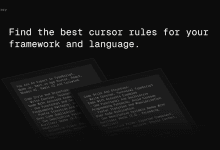13 Prompt Writing Tips to Help You Communicate with Large Models
Write clear and engaging prompt guides
Writing clear, short prompts plays a key role in getting the precise and satisfying results that the platform offers. In this Help Center article, we'll provide you with practical advice and insights on how to create effective prompts to achieve desired results. By following these tips, you will be able to increase the efficiency of your content generation and get better results.
1. Ensure clarity of prompts
First and foremost, it is important to make sure that the tips you provide are clear and easy to understand. Vague tips can lead to ambiguous or off-topic content. Use simple language and avoid unnecessary specialized vocabulary or complex expressions. Making the prompts clear is the basis for producing accurate and relevant content.
2. Clear definition of the content of the mandate
It is crucial to clearly define the content of the task in the prompt. It is important to state the goal or desired outcome in a concise and clear manner. Giving a clear definition of the task helps the AI to more accurately grasp your expectations, which in turn generates more focused content.
3. Adequate description of the mandate
In addition to clear task definitions, tasks need to be adequately described. Give enough information and operational guidelines so that the AI has clear guidelines when it comes to content generation. Don't give vague or overly generalized descriptions that may lead to results that don't meet your specific needs.
4. Adding background information to the mandate
Contextual information is critical to generating content that meets your requirements. When writing prompts, provide relevant background information, industry-specific details, or other context that helps AI understand. This enables AI to create knowledgeable, relevant content that is more relevant to your needs.
5. Labeling of potentially ambiguous elements
If there are potentially unclear or potentially confusing elements in your cue, be sure to clearly label them. By providing clarity or additional explanation, you can strengthen the AI's grasp of the content in question, resulting in a more accurate and relevant content output.
6. Maintaining a positive attitude and avoiding negative terminology
When formulating cues, it is recommended to use positive or neutral words and avoid negative expressions.AI responds better to positive instructions, and cues constructed in a positive frame usually produce more accurate and satisfying content.
7. Dividing the mandate into steps
For complex tasks, consider breaking them down into smaller, simpler, more manageable steps. Using a step-by-step prompt format can simplify the AI process and effectively facilitate content generation. This approach also helps maintain clarity and organization throughout the content generation process.
8. Prioritize information gathering
If you need AI to provide you with information or facts, instruct it to conduct an information search before generating an answer. By doing so, you can ensure that the answers you get are based on thorough research and accurate data.
9. Adapting length and style to needs
To get the desired content, you can try adjusting its length or style of writing. If you need more detail, have the AI use more descriptive words or extend the length of the answer. If you want more concise content, you can break down the task or give it explicit instructions on how to refine its delivery. Be aware, however, that the AI may be less adept at producing content of a specific length.
10. Experimenting with multiple ideas
To stimulate creativity and explore the many possibilities, feel free to instruct the AI to take a different approach or provide multiple options for the task. For example, you can ask the AI to give 10 different perspectives on a particular topic. This way, you can find the most suitable option from the many choices available.
11. Additional missing information
If the content provided by the AI seems irrelevant to the question or omits key information about your product or topic, it may be worthwhile to explicitly provide that missing information. You can do this with additional instructions or more explicit context to ensure that the AI has all the information it needs to generate accurate content.
12. Indicate missing information in parentheses
When you find that you need some information that you don't have at the moment to complete the task, you can put that part of the information in brackets in the prompt. This tells the AI that's the missing piece and allows it to adjust the answer based on the available data.
13. Reiterating the directive at the end
To ensure that the AI fully understands your instructions, consider repeating or restating the requirements at the end of the prompt. This can serve as a reminder to minimize the possibility of the AI misunderstanding.
The above tips for writing prompts are very useful, but too abstract, so the practice of writing prompt commands produces a large number of excellent prompt command frameworks that can assist you in writing prompt commands more efficiently, e.g., RTF, RISEN, RODES, and so on.
© Copyright notes
Article copyright AI Sharing Circle All, please do not reproduce without permission.
Related posts

No comments...



